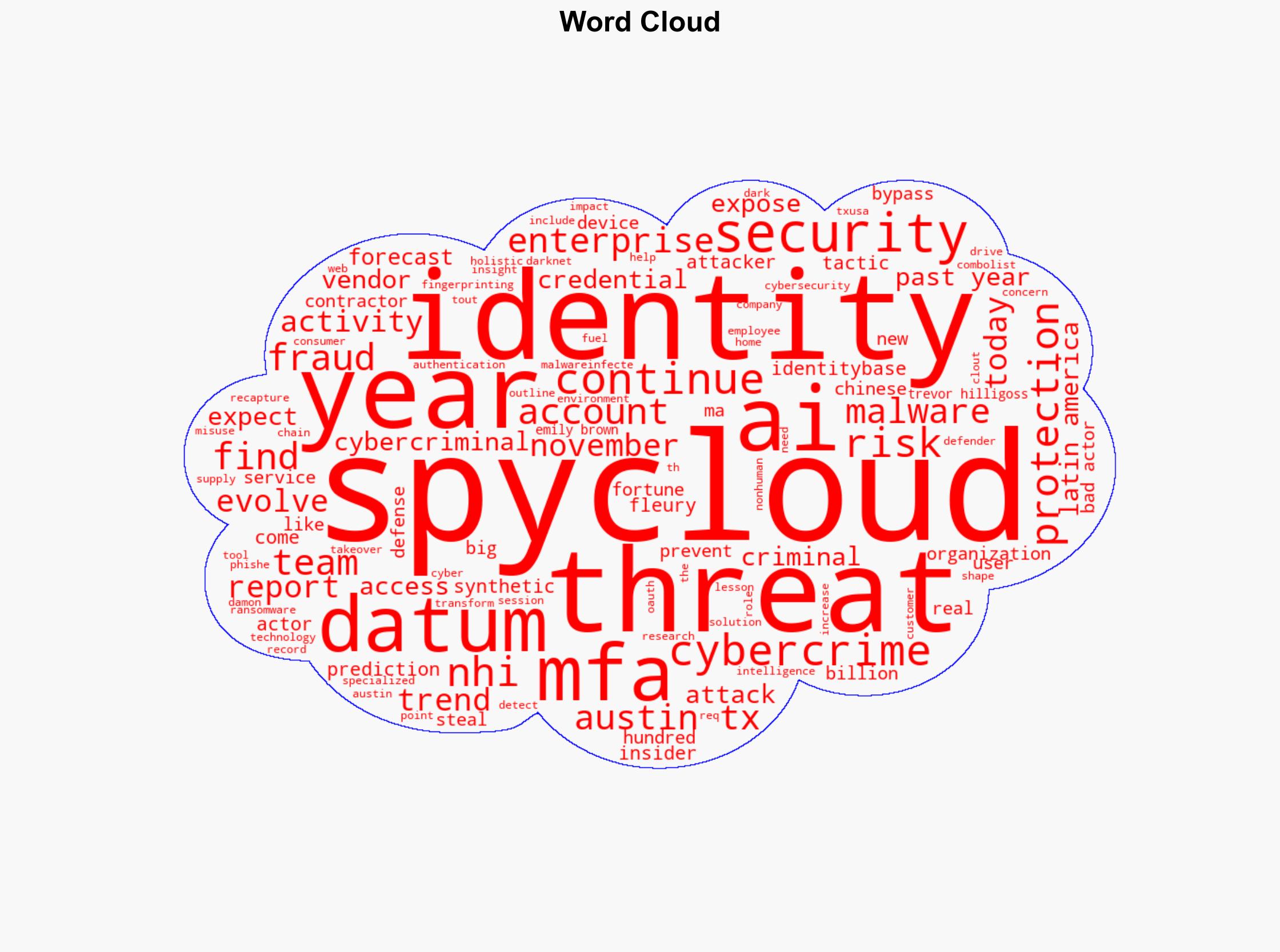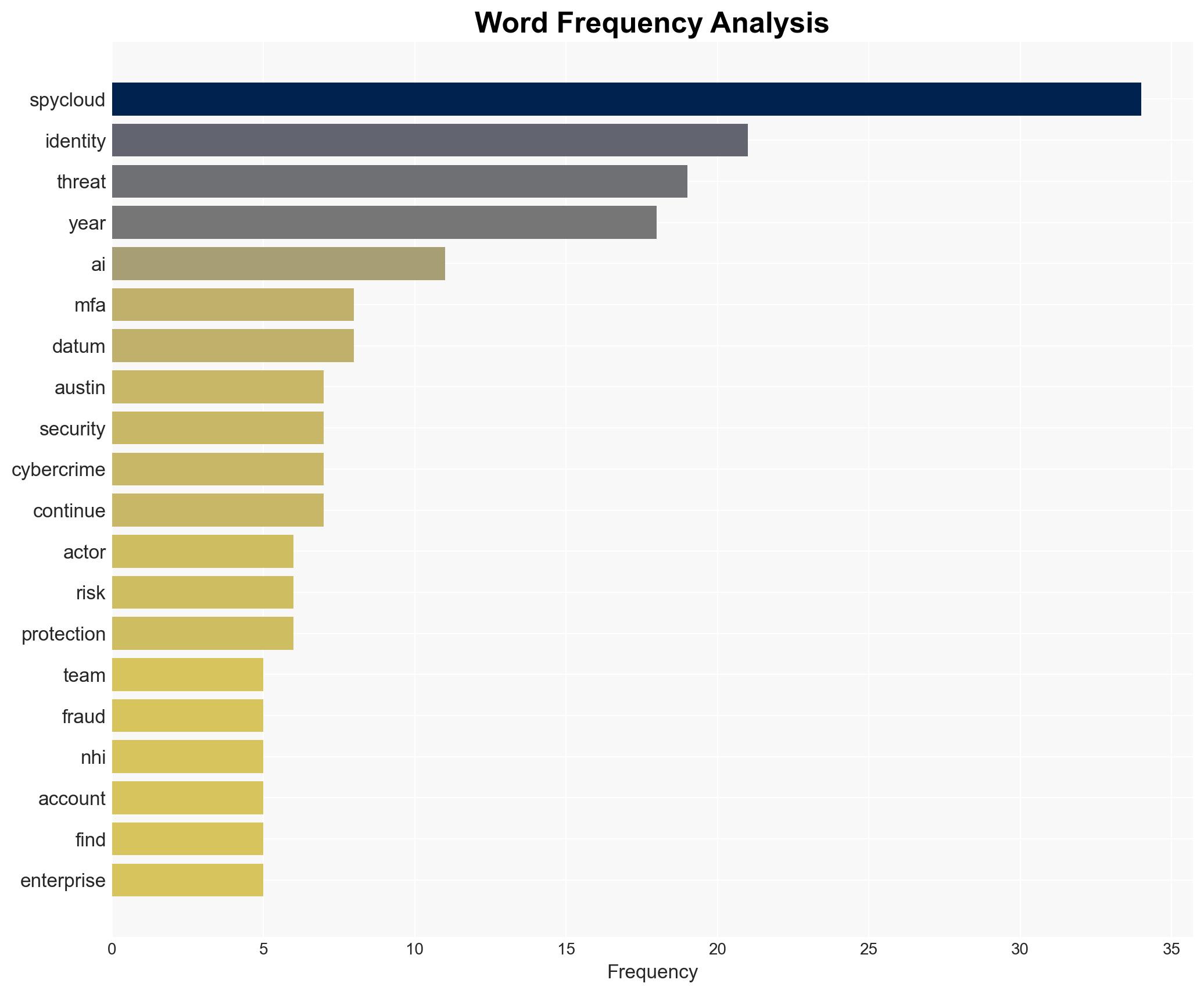SpyCloud Unveils Top 10 Cybersecurity Predictions Poised to Disrupt Identity Security in 2026 – Next Big Future
Published on: 2025-11-18
AI-powered OSINT brief from verified open sources. Automated NLP signal extraction with human verification. See our Methodology and Why WorldWideWatchers.
Intelligence Report:
1. BLUF (Bottom Line Up Front)
With a medium to high confidence level, the most supported hypothesis is that the evolution of identity-based threats, fueled by AI and the proliferation of non-human identities (NHIs), will significantly disrupt identity security by 2026. Organizations must enhance their detection and response strategies to address these emerging threats effectively. Recommended actions include investing in advanced AI-driven security measures and strengthening third-party risk management protocols.
2. Competing Hypotheses
Hypothesis 1: The surge in identity-based threats, driven by AI and NHIs, will lead to a significant disruption in identity security by 2026. This hypothesis is supported by the observed trends in cybercrime tactics, the proliferation of AI tools, and the vulnerabilities associated with NHIs.
Hypothesis 2: Despite the evolution of identity-based threats, existing security measures and regulatory frameworks will adapt sufficiently to mitigate significant disruptions by 2026. This hypothesis relies on the assumption that advancements in cybersecurity technology and policy will keep pace with emerging threats.
Hypothesis 1 is more likely due to the rapid pace of technological advancement in AI and the increasing sophistication of cybercriminal tactics, which outstrip current security measures and regulatory responses.
3. Key Assumptions and Red Flags
Assumptions: It is assumed that AI and NHIs will continue to evolve and proliferate, and that cybercriminals will increasingly exploit these technologies. It is also assumed that current security measures are insufficient to address these emerging threats.
Red Flags: The potential underestimation of law enforcement and regulatory responses, and the possibility of overestimating the capabilities of cybercriminals, could skew analysis.
Deception Indicators: The report’s emphasis on the inevitability of disruption could be influenced by vested interests in promoting cybersecurity solutions.
4. Implications and Strategic Risks
The proliferation of AI-driven identity-based threats could lead to widespread data breaches, financial losses, and reputational damage for organizations. Political implications include increased regulatory scrutiny and potential international tensions over cybercrime attribution. Economically, the cost of cybersecurity measures may rise, impacting budgets. Informationally, the erosion of trust in digital identities could have broad societal impacts.
5. Recommendations and Outlook
- Actionable Steps: Invest in AI-driven threat detection and response systems. Enhance third-party risk management and conduct regular security audits. Collaborate with industry peers and law enforcement to share intelligence on emerging threats.
- Best Scenario: Organizations successfully adapt to emerging threats, minimizing disruptions and maintaining trust in digital identities.
- Worst Scenario: A major breach exploiting AI and NHIs leads to significant financial and reputational damage, prompting reactive regulatory measures.
- Most-likely Scenario: Incremental improvements in security measures mitigate some threats, but significant challenges remain, requiring ongoing adaptation.
6. Key Individuals and Entities
Damon Fleury, Chief Product Officer at SpyCloud, is a key figure in the analysis of identity-based threats. SpyCloud, as a leader in identity threat protection, plays a significant role in shaping the cybersecurity landscape.
7. Thematic Tags
Cybersecurity, Identity Security, AI, Non-Human Identities, Threat Detection, Third-Party Risk Management
Structured Analytic Techniques Applied
- Adversarial Threat Simulation: Model and simulate actions of cyber adversaries to anticipate vulnerabilities and improve resilience.
- Indicators Development: Detect and monitor behavioral or technical anomalies across systems for early threat detection.
- Bayesian Scenario Modeling: Quantify uncertainty and predict cyberattack pathways using probabilistic inference.
- Narrative Pattern Analysis: Deconstruct and track propaganda or influence narratives.
Explore more:
Cybersecurity Briefs ·
Daily Summary ·
Support us





